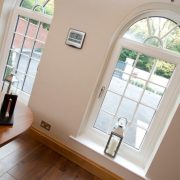Naperville homeowners are approaching 2025 with a clear goal: floors that look exceptional and perform even better. The latest tools, materials, and techniques have reshaped what’s possible, from stable wide-plank hardwoods to patterned tiles that stand up to busy living. Professional crews delivering Naperville Flooring Installation now rely on smarter adhesives and precise layout methods to extend service life while keeping maintenance simple. If you’re comparing options, it’s easier than ever to combine design-forward choices with technical durability. With experienced partners like Simple Flooring Company guiding selections and installation, you can align style and function without compromise.
Updated Installation Methods That Improve Floor Lifespan
Keeping floors stable over the long haul starts beneath the surface. Installers in the area prioritize meticulous subfloor preparation—checking moisture with calibrated meters, flattening using self-leveling compounds, and securing loose panels to eliminate squeaks. Acclimation is no longer guesswork; crews track site humidity and temperature, then stage materials accordingly, which reduces movement-related issues like gapping or cupping. For high-moisture zones, vapor barriers or moisture-mitigating sealers help protect adhesives and coverings from alkalinity damage. These steps, now common in Naperville Flooring Installation projects, directly translate to fewer callbacks and a visibly better finish.
Modern subfloor preparation practices
Today’s best practices also include selecting the right installation method for the space and material. Floating systems with click-lock joints work well for minor substrate imperfections, while glue-down or nail-down approaches increase stability for heavy traffic areas. Installers incorporate premium underlayments that provide sound control and meet building code requirements for multi-level homes and condos. Complex floor plans benefit from a hybrid approach—floating in one area, glue-down in another—to accommodate transitions and movement joints. With tools like dust-containment saws and laser levels, crews reduce mess, improve accuracy, and lengthen the useful life of the finished surface.
Wide Plank Woods and Patterned Tiles Leading 2025 Trends
Design in 2025 favors bold simplicity: wide plank woods that emphasize natural grain and tiles with purposeful patterning. Engineered hardwood with reinforced cores brings the aesthetics of oak, hickory, or walnut to rooms that used to be off-limits to wood. Wider boards, often 7–10 inches, create visual calm and make spaces feel larger, while matte finishes hide everyday wear. In kitchens and baths, patterned porcelain delivers personality—think herringbone, chevrons, and geometric motifs that balance modern cabinetry and lighting. These looks age gracefully when installed with careful attention to layout and proportion.
How to balance scale and pattern
Scale matters with both boards and tiles. Installers align plank width to room dimensions, ensuring end-joint placement doesn’t produce narrow, distracting slivers at walls or doorways. With patterned tile, crews map the focal points first—center islands, fireplaces, and primary sightlines—then mirror the pattern for symmetry. Rectified tiles with tight grout joints read cleaner, and a color-matched grout helps patterns stand out without visual noise. When chosen thoughtfully, wide planks and patterned tiles can coexist in adjacent rooms, creating a cohesive flow that feels both current and timeless.
Eco-Conscious Flooring Choices for Modern Homes
Sustainability has matured from a trend into a rigorous selection process. Homeowners now look beyond labels and ask for third-party documentation like FloorScore, Greenguard Gold, and Environmental Product Declarations (EPDs). FSC-certified hardwood, cork, and modern linoleum (from renewable linseed oil and jute) are popular for their renewability and low emissions. Recycled-content tiles and responsibly sourced stone also get high marks for durability and minimal lifetime impact. With guided specifications and transparent sourcing, it’s easier to express personal style while making choices that are kinder to indoor air and the planet.
Health-focused specs to verify
The right partner helps you verify what matters. Many clients rely on Simple Flooring Company to compare VOC content, adhesive chemistry, and maintenance requirements before ordering material. Installers suggest sound-absorbing underlayments made from recycled rubber or cork to reduce noise without off-gassing concerns. They also recommend water-based finishes and low-odor adhesives that cure to strong, flexible bonds. When these decisions are coordinated early, you get the tactile beauty of natural surfaces and a healthier home environment as part of your Naperville Flooring Installation plan.
Advanced Adhesives That Reduce Maintenance Needs
Adhesives have quietly become the heroes of long-lasting floors. Modern silane-modified polymer (SMP) and next-generation urethane formulas form strong yet elastic bonds, allowing wood or LVP to move seasonally without breaking adhesion. Many products now combine moisture protection with sound control, cutting down on separate layers and simplifying scheduling. Installer-friendly work times help crews place boards precisely, reducing hollow spots and later repairs. Just as important, improved cleanability prevents haze or residue that can dull finishes.
Choosing the right adhesive for each material
Material dictates adhesive choice, and site conditions refine it. For concrete slabs testing high for relative humidity, two-in-one moisture and adhesive systems create a shield that keeps floors stable. Tile projects often benefit from lightweight mortars that reduce fatigue while maintaining excellent bond strength and slump resistance for large-format panels. Wood floors over radiant heat call for flexible adhesives to handle thermal cycling without brittle failures. When your team treats adhesive selection as a performance spec—not an afterthought—Naperville Flooring Installation projects deliver fewer callbacks and lower total cost of ownership.
Perfecting Alignment With Precision Installer Techniques
A floor’s elegance often comes down to straight lines and consistent reveals. Professionals snap control lines, verify room squareness, and choose logical starting points that hide cutoffs in low-traffic zones. They plan staggering patterns that reduce clusters of short boards and minimize repeating plank visuals. For tile, modern leveling systems curb lippage, creating smooth transitions across large-format surfaces. Thoughtful expansion gaps, accurately spaced perimeter joints, and careful scribing around casework finalize a polished look that holds up to scrutiny.
Tools that elevate accuracy
Precision tools translate vision into reality. Laser distance meters, line lasers, and digital angle finders streamline layout and cut planning for complex spaces like bay windows and angled hallways. Oscillating tools and track saws enable tight scribe fits at hearths and built-ins without damaging adjacent finishes. Installers also pre-sort boards by length and color variation to map a natural gradation across the room. When craftsmanship, planning, and technology align, the finished floor reads as one continuous surface—exactly the kind of outcome homeowners expect from seasoned teams and partners such as Simple Flooring Company.
Seamless Transitions That Enhance Interior Flow
Transitions can either interrupt a design or quietly connect it. The best modern projects treat thresholds as part of the composition, using flush reducers, slim metal profiles, or color-matched trims to maintain visual continuity. In open layouts, one of the smartest moves is to manage height differences in the subfloor, not on top of the finished surface, so transitions sit level and unobtrusive. Stair nosings—especially flush options for wood and LVP—extend the same finish across floor and step, echoing the room’s lines and light. The result is a space that feels larger and calmer, with fewer visual breaks.
Design strategies for open-plan spaces
Start with a continuous datum line that carries through key rooms, then plan material changes at logical architectural points like cased openings or aligned sightlines. Minimalist metal profiles protect tile edges without adding bulk, and color-matched t-molds can quietly bridge floating floors where movement joints are required. In wet areas, integrate waterproofing membranes under thresholds so moisture management is consistent, not piecemeal. For multi-surface homes, a mix of flush ramps, tapered underlayments, and slim trims can mitigate height variations while meeting accessibility needs. When these details are coordinated early with a trusted crew, Naperville Flooring Installation achieves a custom, integrated look—and with guidance from Simple Flooring Company, those transitions enhance daily living as much as they elevate style.










Comments